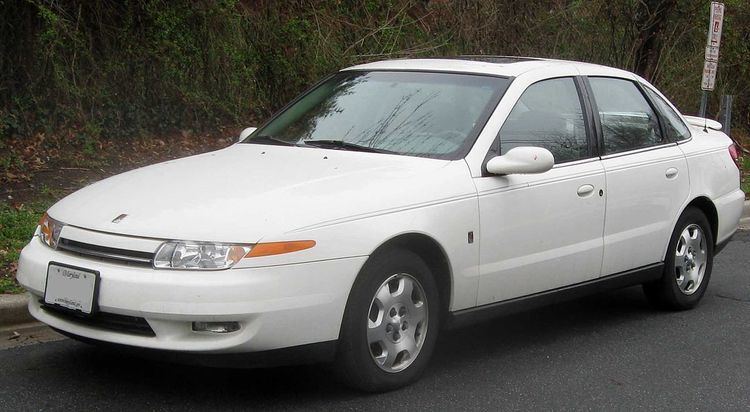Production 1999–2004 Class Mid-size | Model years 2000–2005 | |
 | ||
Manufacturer Saturn (General Motors) Also called Saturn L100
Saturn L200
Saturn L300
Saturn LS
Saturn LS1
Saturn LS2
Saturn LW1
Saturn LW2
Saturn LW200
Saturn LW300 Assembly Wilmington, Delaware, United States (Wilmington Assembly) | ||
The Saturn L-Series is a line of automobiles that were sold by Saturn.
Contents
The L-Series mid-size sedans and station wagons were introduced in 2000. They were based on the Opel Vectra B and manufactured at a GM plant in Wilmington, Delaware. The L-Series was available with straight-4 and V6 engines with either 5-speed manual or 4-speed automatic transmissions.
Poor sales of the L-Series caused GM to cancel the line for 2005. The first L-series car was built in May 1999, and the last one rolled off the Wilmington line on June 17, 2004, after a short run of 2005 models. About 406,300 L-series cars were built in this period. The plant was then retooled to build the Pontiac Solstice and Saturn Sky roadsters.
The replacement for the L-Series, the Saturn Aura, arrived in August 2006 for the 2007 model-year. The Aura was built on the Epsilon platform, also shared by the Pontiac G6, and the Chevrolet Malibu.
Model history
Quality issues
The Saturn L-Series was troubled early in production by a number of quality issues, often related to engine failures, transmission failures and overall fit and finish issues. Consumers reported repeat problems with tire noise and vibration linked to poorly designed control arm bushings and nonadjustable rear alignments. A retrofit kit was released to address these concerns.
In 2005, a recall was issued pursuant to a defect petition by the North Carolina Consumers Council, a consumer nonprofit advocacy organization, alleging repeat brake and tail light failures. The resulting recall affected more than 300,000 vehicles in the United States and Canada. Later that same year, the North Carolina Consumers Council petitioned for an investigation into timing chain failures and subsequent engine failures across the model lineup for vehicles using the 2.2L engine. The resulting recall affected only a small number of vehicles built in a four-month period in late 2000 and early 2001. The organization reported that complaints of engine failure due to a defective timing chain design persist to this day and requests for recall expansions have largely been ignored. The organization has gone so far as to make its first recommendation against the purchase of a vehicle in its more than forty year history due in part to this timing chain defect.
